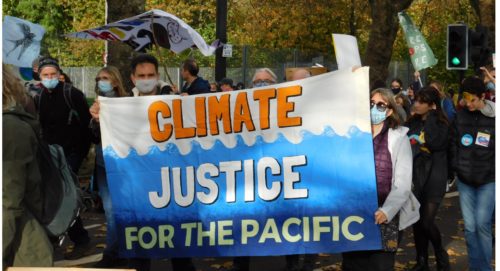Scottish First Minister Nicola Sturgeon was over the moon when she reacted to the outcome of last week’s sale of rights to develop wind farms off the coasts of Scotland, writes Iain Bruce for ecosocialist.scot.
The ScotWind auction of licenses to 17 projects covering 7,000 km2 of seabed could lead to the generation of another 24.8GW of clean energy in the next ten years or so. That’s two-and-a-half times the amount the Scottish government had expected, and two-and-a-half times the offshore wind capacity that Scotland currently has operating or soon to come online. It would effectively double the entire installed wind energy capacity of the UK, including offshore and onshore – providing, in theory, enough electricity to power more than half, possibly three quarters, of all the homes in Britain. Obviously, this could be a significant step towards decarbonising the energy supply this decade, which is essential to keep global warming increases below the critical level of 1.5 degrees Celsius.
On the main BBC Scotland news that night, Sturgeon said the nearly £700 million due to her government in option fees was just the start. As the projects were implemented, she expected £1 billion in supply chain investment for every 1GW of power generated. She called it “truly historic” in terms of the scale of the opportunity. An industry representative was even more fulsome. For Scotland this was a moment akin to the beginning of North Sea Oil in the 1970s. Two days later, the First Minister tweeted a screenshot of a Zoom meeting she’d just held with executives from the multinational energy companies that had won the rights. They include BP, SSE and Shell, from the UK and the Netherlands, Iberdrola, the Spanish parent company of Scottish Power, as well as Vattenfall of Sweden, Falcke Renewables of Italy, Baywa of Germany and Deme of Belgium. Nicola Sturgeon said they’d told her how they would help to put Scotland at the forefront of offshore wind power globally.
ScotWind auction slammed
The ScotWind auction was immediately slammed by some on the left of the pro-independence movement. Their criticism centred on the fact that the licences had gone to foreign companies with little guarantee that future benefits, or jobs, would come to Scotland. Robin McAlpine, the former director of Common Weal, pointed out that the amount those companies paid for their licences was a pittance compared with what they can expect to make from selling the electricity they generate – they could pay it off with a couple of days’ wind, he claimed. He also calculated that, per Gigawatt, it was barely a third of what the Scottish government had said it hoped to bring in.
These are serious arguments, and in the week since the auction results were announced they have gained traction in some expected, and unexpected quarters. Conter used a simplified version to denounce an alleged irrevocable turn to the right by the Scottish Green Party – a misplaced and somewhat sectarian criticism towards the base of the Scottish Green Party in our view. Anas Sarwar, the leader of the Scottish Labour Party, attacked the Scottish government at First Minister’s questions in the Holyrood Parliament for selling out Scottish jobs and selling off Scottish assets “to foreign multinationals with woeful human rights records” (sic). He echoed the Common Weal argument that the Scottish National Party (SNP) administration’s failure to deliver on its promise to set up a state-owned energy company had led to this new “privatisation”. Neil Mackay went over the top in The Herald and accused the SNP of “Thatcherism-lite”. Common Weal has now developed its case in more detail in a 14 page report just published, entitled “ScotWind: Privatising Scotland’s Future Again”. The left-wing Labour MSP, Mercedes Villalba, retweeted the report approvingly, demanding “socialist ambition” and a “people’s government” that would “advance democratic worker ownership of the economy”.
Sovereignty
The counter argument, not only from the SNP but from some on the radical left of the pro-independence movement, points to the ever-present issue of sovereignty.
It questions some of the basic premises of the Common Weal argument, in particular the possibility of a devolved Scottish government, given the current limitations on its legal and fiscal powers, establishing a public energy company capable of taking on an electricity generation project of the kind and scale of ScotWind. It points out that these limitations are precisely one of the strongest arguments for independence. The reasoning runs something like this:
After the 2014 Independence Referendum, one concession from the government in Westminster was to transfer to Holyrood complete control over Crown Estate Scotland, the body that granted the ScotWind licences. That means the Scottish government is now, effectively, the landlord of the seabed up to 200 miles off Scotland’s very large foreshore. As landlord, it can charge for the licences to exploit the resources, as it just has done, and when production begins it will be able to charge rent.
This is also the means by which onshore wind farms have already been bringing in a tidy sum for some of Scotland’s big private landowners. Although such deals are shrouded in secrecy, as far back as 2012 the Earl of Moray was reckoned to be making £2 million a year from the 49-turbine farm on his Doune estate in Perthshire, and the Duke of Roxeburghe just a bit less from a slightly smaller development in Lammermuir Hills. On a similar basis, the Scottish government might be able to charge as much as £400 million a year in rent, according to some calculations, as and when all the ScotWind projects start to generate electricity, although the Common Weal report estimates this income at between £50 and 90 million a year. In either case, it is still a pittance compared with what the companies stand to make.
Reserved power
However, the argument continues, energy policy itself, including taxation, regulation and ownership, remains a legal power reserved for the UK government. That means firstly that the tax paid by the corporations on their profits from wind power will go into the coffers of the Westminster government, not Holyrood. Nor would Holyrood benefit from the substantial fees for connection paid to the national grid.
Secondly, it remains very unclear what levers the Scottish government could use to ensure the companies keep their promises – for example to create supply chain jobs in Scotland – or even to control where the energy goes. There is currently nothing like the capacity to bring ashore and distribute an extra 25GW of clean energy, and apparently no plan to install the connections required, so it is likely that the companies will choose immediately to re-export a large part of the wind energy to Europe.
Thirdly, and perhaps most decisively, under the existing constitutional settlement, the Scottish government cannot nationalise all or part of the industry in order to ensure its aims are met. The National Energy Company mooted by the Scottish government in 2017 was an electricity distribution company. The idea seems to have fallen victim to the pandemic and the more recent crisis in the UK’s gas retail sector that has led to the collapse of over 20 energy distribution companies. There appears to be some doubt about whether the Scottish government with its current powers could set up an electricity generating company, but even if it could, it seems certain that the fiscal limits on Holyrood’s ability to borrow would mean it could never raise anything approaching the amount of investment required to develop offshore projects on the scale of the ScotWind ones.
Alternative – towards radical independence
Whichever side of this argument you come down on, the issues of revenue and control, ownership and sovereignty, must be an important part of the alternative we need to develop as Scotland moves towards independence. The experience of other small, resource-rich countries, combining measures of nationalisation, raising royalties and rewriting the service contracts on offer to multinationals, may have useful lessons here, both positive and negative. And the efforts of Bolivia or Venezuela in the first decade of this century, to assert sovereignty over their natural resources and redirect revenue towards social spending, may have a lot more to teach us in this respect than Norway.
But these aspects are not enough. On their own they risk leaving us with a narrow nationalist, technocratic response, which will certainly be insufficient to address the gravity of the global climate crisis we face, and the depth of the changes we need in the ways we live. They have to be integrated into a wider, deeper, more ambitious and more urgent vision of the transition ahead, one that is inspired by the principles of climate justice that were expressed so impressively on the streets of Glasgow in November. If there is one thing that we should have learned from the breadth and diversity of the protests during COP26, it is that such climate justice is inseparable from social justice, in all its dimensions. That means bringing together the rights of workers and working-class communities in the global north, including those who are affected by the dismantling of fossil industries, with the rights of those in the global south who are most affected by climate change, especially women, Indigenous communities and the migrants who will be forced to move on an ever vaster scale (including to Scotland), and with the rights of nature itself (something a future Scottish state should write into its constitution, following the example first set by Ecuador back in 2008).
the gravity of the global climate crisis we face, and the depth of the changes we need in the ways we live … have to be integrated into a wider, deeper, more ambitious and more urgent vision of the transition ahead, one that is inspired by the principles of climate justice that were expressed so impressively on the streets of Glasgow in November.

Building a Vision
That vision needs to build out from three main pillars.
Firstly, we need a transition that is just – in the full sense of the word. Of course everyone, including the Scottish government, talks about a just transition. But it is not enough just to mention, or hope, that wind farms and other renewables will create thousands of jobs for those whose jobs must go in oil and gas. We need a planned transition which includes both, and many other kinds of job too, where the workers and the communities involved are not just consulted, but play a leading, decision-making role, so that they can choose and exert control over their own futures. We need not just some “green jobs” but a complete refocus and massive change to develop what has been called “green, purple and red jobs”.
Secondly, we need a profoundly different grasp of what we are transitioning from and to, and a much more creative vision of how to do it. We must not think of renewable energy simply replacing fossil fuel energy, so that electric cars can replace petrol ones while everything else goes on more or less as is. We need to reduce sharply the amount of energy we use, and that means radical changes to the ways we travel, where we live and where we work, how we heat our homes or obtain our food, and indeed profound changes to what we value for a good life, over and above the consumption of more and more stuff – stuff that too often has been hauled backwards and forwards across the globe before it gets to us. This means we also need a wider rethink of how we produce our energy. Obviously, nobody wants just to switch off the lights, so we may still need some large-scale clean energy generation projects like ScotWind. And the complexities of technology, supply chains and finance may leave us with no choice but to do some business with big energy companies, for a limited period and on strictly regulated conditions. But all this needs to be put alongside, and subordinated to, a new emphasis on the local generation and consumption of clean energy – local energy that is publicly owned and controlled by the community.
all this needs to be put alongside, and subordinated to, a new emphasis on the local generation and consumption of clean energy – local energy that is publicly owned and controlled by the community.
Thirdly, we need to make absolutely sure that whatever we do to achieve this transition is not trashing the environment, living conditions or rights of other communities in other parts of the world, especially in the Global South. Exactly how much balsa wood went into the wood resin sandwiched between fibre glass in those wind turbine blades? Which tropical forest was that balsa wood dragged out of? How much say did the people living there have, and how much benefit or destruction did it bring them? The same goes for the lithium in the batteries that will store all that clean energy. We can only ensure positive answers to these questions if we build on the close relations and solidarity with movements and communities in the South that flourished on the streets of Glasgow last November.
The transition to zero carbon has to be a shared and collaborative project across the world – part of a Radical Global Green New Deal – not a privilege for the North at the expense of the South.
The transition to zero carbon has to be a shared and collaborative project across the world – part of a Radical Global Green New Deal – not a privilege for the North at the expense of the South.
The Urgency of Independence
Here in Scotland, these three pillars are yet more arguments for the urgency of independence. They obviously cannot be achieved within the confines of the current devolution settlement. But this is also where the real weakness of the current Scottish government approach becomes clear. It is a weakness that runs much deeper than an alleged dispute over whether or not it could have set up a publicly owned generation company to take advantage of the ScotWind licences – important though that issue is.
The SNP-led administration likes to broadcast its green commitments, not totally without justification. Scotland’s legally-enshrined target of zero carbon by 2045 is not nearly soon enough, but in Europe it is equalled only by Germany and Sweden. Scotland was the first and only country of the Global North to respond to the demands of governments in the South and make a symbolic pledge during COP26 – albeit a paltry £2 million – to a fund to pay for the loss and damage already suffered by those countries as a result of climate change. The latest ScotWind auction shows the government is taking seriously the need for big and rapid increases in renewable energy. Given the gravity of the climate crisis, these have to be good things, even if they are by a long way insufficient.
False Narrative of ‘Net Zero’
The problem is that all of this is underpinned, and ultimately undermined, by the fact that Scottish government policy remains wedded, apparently unquestioningly, to the false narrative of net zero by 2045, with all its accompanying false solutions of negative emissions technologies and offsets, including carbon capture and storage (CCS), hydrogen, Bio Energy with CCS (BECCS) and nature based solutions to be used as offsets. This is the same narrative that the UK government as COP26 President worked hard to impose in Glasgow in November; the same narrative that many fossil fuel companies are using to justify their continuing extraction of oil and gas through to the mid century and beyond; the same narrative that other core sectors of international capital, especially in finance, are using to back up their green capitalist revolution; and the same narrative that was called “The Big Con” by Friends of the Earth.
It is also the same narrative that was massively rejected by protesters on the massive demonstration in Glasgow on 6 November and throughout the COP.

For core sections of the SNP leadership, this is a weakness that is embedded in their fundamental social democratic vision of society and economy, in their basic belief that, with a bit of a tweak and a bit more regulation, the free market can solve the greatest existential threat that humanity has ever faced. Well, it cannot! Many of the 100,000+ members of the SNP surely know that. So does the membership of their governmental partners in the Scottish Green Party. Even many Labour members and supporters know the free market does not work. That is why one of the greatest challenges now for climate activists in Scotland is to work with those people and with others, in the Indy movement, in the trade unions, on the left, to shift this narrative, to dismantle the myth of net zero and encourage the movement onto a much more inspiring path – that of climate justice, which also means social justice and national justice.
26 January 2022
Iain Bruce is a member of ecosocialist.scot living in Glasgow



